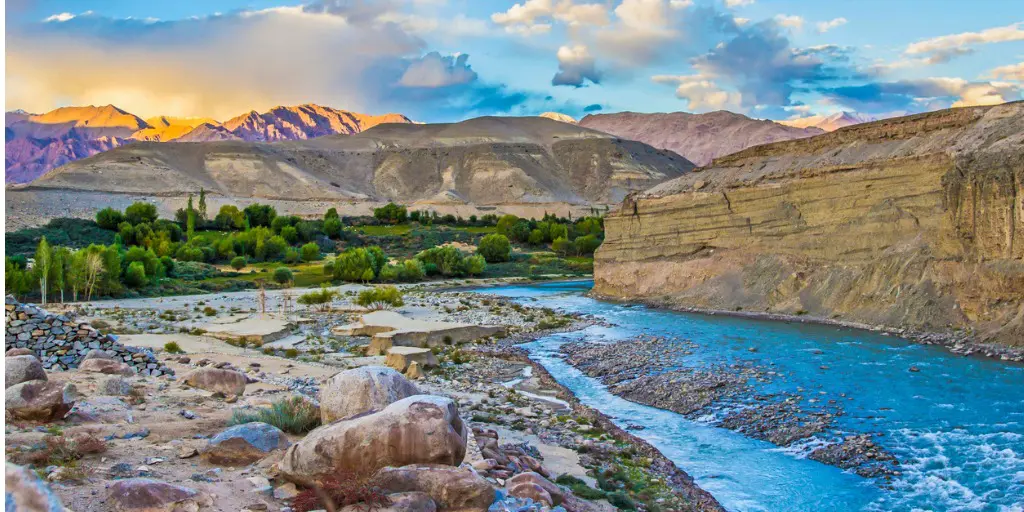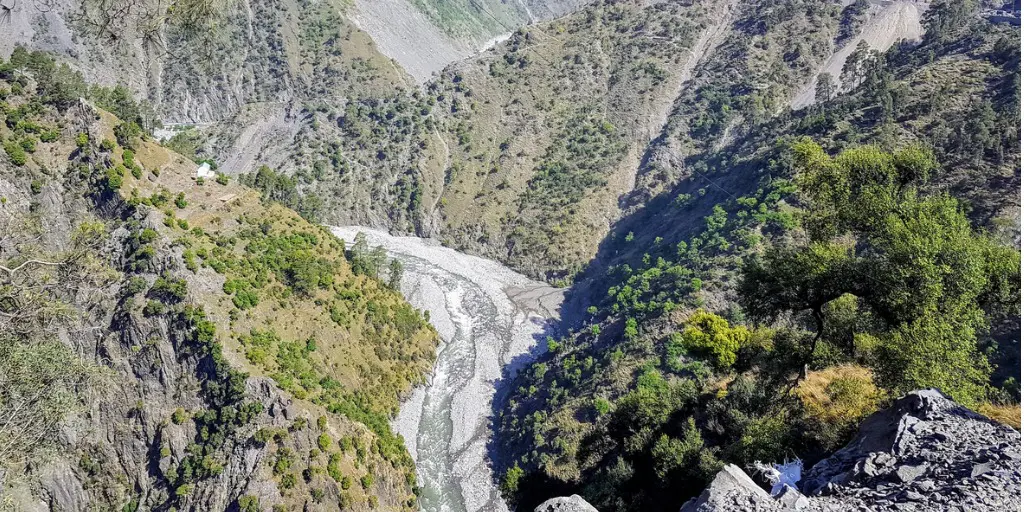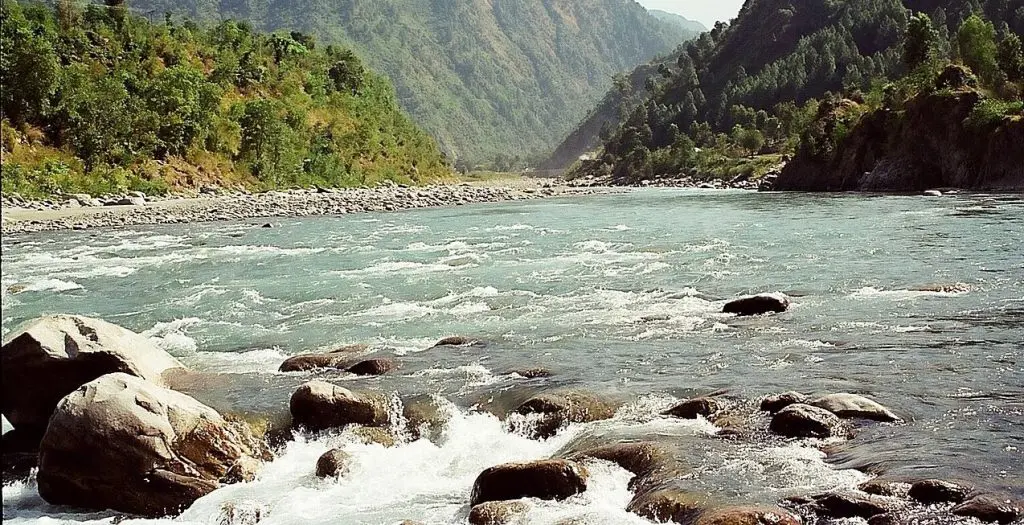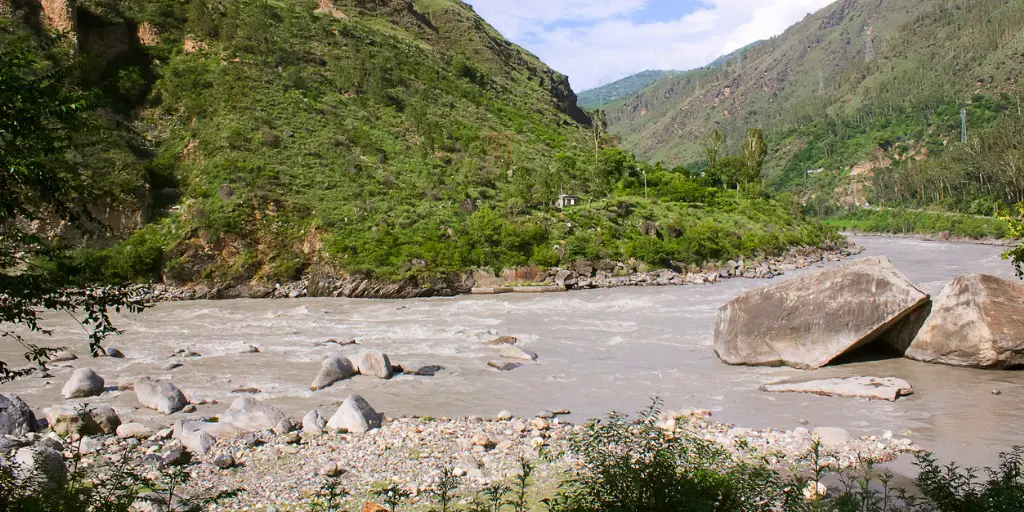Guide of Rivers in Pakistan – Their flow paths, Area covered
Table of Contents
It was interesting to see the deep and calm rivers of Pakistan. The calm waves and serenity can instantly make anyone feel calm and peaceful. In addition to their tranquility and beauty, rivers have immense economic and political importance.
Rivers are a major source of drinking water and are used for irrigation and hydroelectricity. Therefore, their existence is crucial for creating a stable economy.
Pakistan has beautiful landscapes, historical buildings, scariest places, and rich natural resources. It has majestic mountains, wonderful coastal views, plains, and lush meadows. Pakistan has many rivers. To know more about the major rivers of Pakistan, read on.
List of Rivers In Pakistan
There are five rivers in Pakistan, namely:
- Jelhum River
- Chenab River
- Sutlaj River
- Indus River
- Ravi River
Indus River
The Indus River is also known as the Sindhu River, also the longest river in Pakistan. It was called Sindhu in ancient Indian Sanskrit and Hindu by Persians and was considered a “border river.” It is one of the largest rivers in Asia.
The river flows through China (western Tibet), India (Ladakh), and Pakistan. It then flows through the Indian region of Ladakh to Gilgit-Baltistan before merging with the Arabian Sea.
The river’s total drainage area is more than 1,165,000 square kilometres (450,000 square miles), and its annual flow is estimated at 243 square kilometres (58 cubic miles). Its geography is also very interesting. It begins in the mountain springs and glaciers of the Himalayas, Karakoram, and Hindu Kush.
The northern part of the Indus Valley and its tributaries form the Punjab region, while the lower reaches of the river, known as the Indus, flow into a large delta. The Indus River provides a major water source for Pakistan’s economy, particularly the breadbasket of Punjab, which accounts for most of the country’s agricultural production.
These are Pakistan’s major rivers. They are economically important for the country and help other industries, such as tourism, power generation, and agriculture.
Jehlum River
The Jhelum River flows through the Kashmir Valley in northern India and eastern Pakistan. It is a tributary of the Chenab River and has a total length of approximately 725 km (450 mi). Many interesting stories exist about the origin of this river’s name.
Some claim that when Emperor Dara reached the river after winning a series of battles, where he placed his flag on the river bank and named it “Jai Alam,” which means “Place of Flags.” With time, people started calling Jai Alam Jhelum.

Rivers in Pakistan- Jhelum River of Pakistan
Some also link the origin of the river’s name to Sanskrit. The river’s name comes from an apocryphal legend. According to mythology, Lord Shiva committed suicide by jumping into the Vitasta River. It is also mentioned in the classic Rig Veda as one of the major rivers.
In 326 BC, Alexander the Great led his army across the Jhelum River at the Battle of Hydaspes and defeated the Indian king Porus. The river originates from the Virinaj spring at the foothills of Pir Panja mountain in Kashmir. It then joins its tributaries, the Lidar River at Karnabar in the Kashmir Valley and the Indus River at Sadipora. It flows through Srinagar and Ural Lake before entering Pakistan.
It is also connected to the rest of Pakistan and Pakistan Kashmir via the Kohala Bridge east of Circle Bakot. The Poonch river then joins it and flows into the Mangla Dam reservoir in Mirpur district.
There are many lakes associated with the Jhelum River. Lakes include:
- Wular Lake
- Dal Lake
- Manasbal Lake
- Gangabal Lake
- Nigeen Lake
- Anchar Lake
Why is the Jhelum River so much more important than others?
The Jhelum River has high power generation potential. Due to this, the government has taken steps to construct the following dams on the rivers.
- Completed in 1967, the Mangla Dam is one of Pakistan’s largest earthen dams, with a water storage capacity of 5,900,000 acre feet (7.3 km2).
- The Rasul Barrage was built in 1967 and has a maximum flow capacity of 850,000 cubic feet per second (24,000 cubic meters per second).
- The Trimmu Barrage was constructed in 1939 at the confluence of the Chenab River, about 20 km from Jhang Sadar. It has a maximum discharge capacity of 645,000 cubic feet per second (18,000 cubic meters per second).
- Haranpur (Victory Bridge) was built in 1933 in Malakwal (5 km), near Chak Nizam village. It is one kilometre long and is mainly used by Pakistan Railways, but it has a lane on one side for light vehicles, motorcycles, bicycles and pedestrians.
- Uri Dam is located in Jammu and Kashmir and includes a 480 MW hydroelectric power plant.
- Kishanganga Hydropower Station 330 MW Hydropower Station is located in Jammu and Kashmir.
Chenab river
Next on the list is the Chenab River, as Pakistan is rich in natural beauty and stunning landscapes. It has everything from green plains to vast mountains and majestic deserts. The Chenab River, like the Jhelum River, separates India and Pakistan.
It originates high in the Himalayas in the Lahaul and Spiti districts of Himachal Pradesh, India, flows through the Jammu region of AJK, reaches the plains of Punjab, Pakistan, and finally empties into the Indus River near the city of UchSharif.
The Chenab River was known to Indians from the Vedic period. In 325 BC, Alexander the Great founded the city of Alexandria on the Indus River, now called Ush Sharif. Jhelum and Ravi joined Chenab, Beas joined Sutlej, and then Sutlej and Chenab united to form Panjnad near Uch Sharif.
The combined river flows southwest for about 45 miles to join the Indus River at Missankot. The Indus River continues to flow towards the Arabian Sea.
Ravi River
The Ravi is a river located in northwestern India and eastern Pakistan. It is also one of the six major rivers in the Indus system of Punjab. Under the Indus Waters Treaty, the waters of the Ravi River belong to India. Similarly, the Indus Basin Project diverts water from the western rivers of the Indus system to fill the Ravi River in Pakistan.
According to ancient history dating back to the Vedas, the river Ravi is known as Airavati. The Ravi River is one of the important components of the Indus River Basin and is the source of the Indus River Basin.
The Ravi River flows into the Indus River, emptying into the Arabian Sea. The river originates from Balabanghar in Kangra district, Himachal Pradesh, India. After flowing over 720 kilometres (450 mi), India’s river drains 14,442 square kilometres (5,576 sq mi).
The Ravi River also plays an important role in Pakistan’s vegetation. It is responsible for cedar, walnut, white oak, mulberry, alder, table pine, twisted cypress, red pine, cedrela serata, sisso, olive, and Kikkar.
Sutlej river
The Sutlej River is the longest in Pakistan and originates in the Punjab Province. It is a cross-border river between northern India and Pakistan. The Sutlej river is also known as Sattadri in the local language. The Sutlej River’s source is located west of the Rakshasa Lake Basin in Tibet.
The Sutlej River’s water is allocated to India under the Indus Waters Treaty. Moreover, the river has an annual discharge of approximately 14 million acre-feet (MAF) and is located above the Ropar Dam and across the Sutlej below the Bhakra Dam.
The Sutlej River is important to Pakistan as it plays an important role in hydroelectric power generation. It is representative of many hydropower projects in Pakistan, including the 1,325 MW Bhakra Dam, the 1,000 MW Karsham Wangtu Hydropower Station, and the 1,500 MW Nathpa Jakri Dam.
Other small yet important rivers in Pakistan are:
Names of River |
Length |
Nearby cities |
| Indus River | 3,180 km | Sukkur, Hyderabad |
| Swat River | 219 km | Mingora, Malakand |
| Kunhar River | 166 KM | Naran, Kaghan |
| Gilgit River | 185 KM | Gilgit |
| Neelum River | 245 KM | Muzaffarabad, Uri |
| Kurram River | 320 KM | Parachinar, Bannu |
| Hingol River | 166 KM | Gwadar, Lasbela |
| Dasht River | 430 KM | Quetta |
| Gomal River | 400 KM | Dera Ismail Khan |
| Soan | 250 KM | Islamabad, Rawalpindi |
If you have any questions about rivers in Pakistan, please leave us a message below, and we will respond as soon as possible.
Importance of rivers in Pakistan
Rivers play an important role in shaping Pakistan’s geography, economy and overall development. Following are some key aspects that highlight the importance of rivers in Pakistan:
Agriculture and irrigation
Pakistan’s major rivers, such as the Indus, Jhelum, Chenab, and Ravi, play a significant role in agriculture by providing irrigation. The extensive canal system from these rivers supports crop cultivation and makes agriculture possible.
Water supply
Rivers are Pakistan’s primary source of freshwater for agriculture, domestic use, and various economic activities. They support a growing population and business strategies.
Hydroelectric power
Pakistan relies on hydropower for a significant portion of its electricity generation, but it’s not the “huge part” you might imagine. As of 2023, hydropower contributes around 30-35% of the total electricity mix. Dams like Tarbela and Mangla are indeed crucial for hydropower generation in Pakistan. They create reservoirs that store water and release it through turbines to generate electricity.
Biodiversity and ecosystems
River ecosystems provide a home for various plants and animals, including fish, birds, and other wildlife. Maintaining the health of river ecosystems is crucial for preserving biodiversity and protecting the natural environment.
Flood control
While rivers bring water to agriculture, they can also pose flood risks, especially during the monsoon season. Proper river management combined with dam construction can help mitigate the consequences of flooding and protect communities.
Frequently Asked Questions Related to Major Rivers in Pakistan
How many rivers are there in Pakistan?
Pakistan has many rivers, but the most important ones are Indus, Jhelum, Chenab, Ravi, Kabul, and Sutlej.
Where are the five rivers in Pakistan located?
In the Punjab province of Pakistan, five rivers—the Jhelum, Chenab, Ravi, Indus, and Sutlej—meet at the Panjinad River near Mitankot.
What is the largest river in Pakistan?
The Indus River is the longest river in Pakistan, with a total length of approximately 3,180 kilometres.
What are the main rivers in Pakistan?
The Indus is Pakistan’s most important river because it is used for transportation, hydropower, agriculture, and drinking water.
Pakistan’s most important economic sector is agriculture, which relies heavily on river water supplies. Therefore, it is the basis of the country’s economy.










